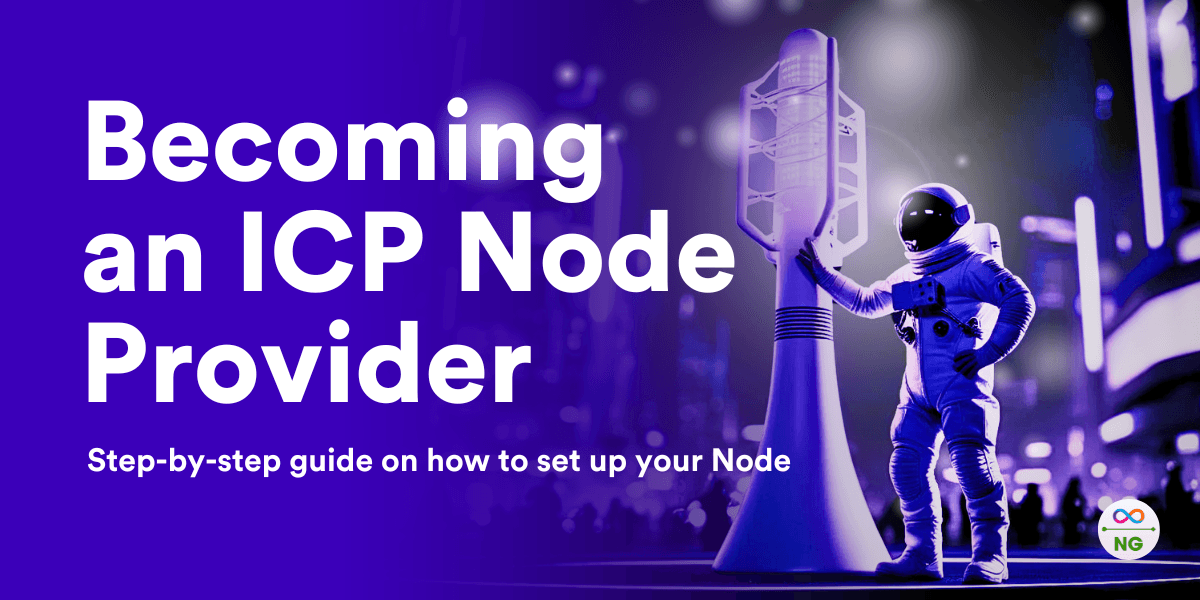
The Internet Computer blockchain is more than just an innovation—it’s an invitation to developers, entrepreneurs, and tech enthusiasts eager to shape the future of the decentralized web. Traditional cloud services come with limitations, but the Internet Computer offers a decentralized and scalable alternative, enhancing speed, security, and cost-effectiveness.
Understanding the Role of Nodes
At its foundation, the Internet Computer operates on a distributed network of nodes. These nodes, housed in diverse data centers, work together in subnets to maintain decentralization and ensure network reliability.
Each node in a subnet processes transactions in a synchronized order, ensuring a consistent state across the network. Node providers, responsible for hosting and maintaining these nodes, play a key role in sustaining the network’s stability, security, and decentralization. An advanced consensus protocol facilitates synchronization among nodes, enabling high-speed performance without compromising security.
Becoming a Node Provider: Steps and Requirements
Running an Internet Computer node is a rewarding way to contribute to the Web3 revolution. However, it requires careful preparation and adherence to network guidelines.
Registration and Governance
To become a node provider, registration with the Internet Computer Network is essential. The process involves meeting technical and regulatory criteria that ensure reliability and security.
Participation requires adherence to governance and reward structures set by the Network Nervous System (NNS), a decentralized autonomous organization (DAO) that oversees node approval. The process includes submitting a proposal and a self-declaration document outlining the provision of node machines, identity verification, and intentions as a provider. The community then votes to determine onboarding eligibility.
Once approved, node providers set up and manage their nodes, actively contributing to network operations. Monthly rewards, determined by the NNS DAO, are distributed on the 15th, influenced by the 30-day average ICP price, hardware generation (Gen 1 or Gen 2), geographic location, and the number of nodes operated.
Hardware Generations
Two generations of node machines exist in the Internet Computer network:
- Gen 1 Machines: Vendor-specific hardware used by providers before 2022.
- Gen 2 Machines: Designed with generic hardware to support virtual machine (VM) memory encryption and attestation, enhancing future development capabilities. A community-validated list of approved configurations is available for reference.
Key Requirements for Setting Up an ICP Node
Setting up an Internet Computer node requires capital, technical expertise, and proper infrastructure. Here’s what you need:
Financial Investment
Running an ICP node requires an investment ranging from $5,000 to $30,000, depending on location, power fees, and bandwidth.
Technical Skills
Operating a node necessitates technical proficiency in:
- Internet Computer network architecture
- Software installation and configuration
- Running virtual machines (VMs) via SSH
- Linux system management
Hardware Specifications
To ensure efficient node operation, the following hardware requirements must be met:
- Physical Location: Nodes should be hosted in professional data centers with reliable electricity, cooling, and security.
- Server-Grade Hardware:
- CPU: Multi-core processor (minimum 8 cores)
- RAM: At least 128 GB
- Storage: SSDs with 1 TB or more capacity
- Redundant power supplies and cooling
Software Setup
- Node Software: Provided by the ICP Foundation, ensuring seamless communication and consensus.
- Operating System: Linux-based systems, with Ubuntu Server being a common choice for stability and compatibility.
- Automated Updates: Keeping node software updated ensures synchronization with protocol changes.
Network Infrastructure
- Firewall and Security: Protection from unauthorized access while enabling seamless node communication.
- High-Speed Internet: A connection of at least 1 Gbps bandwidth is recommended.
- Dedicated IP Addresses: Each node requires a static, public IP address for direct network communication.
Setting Up Your Node: Step-by-Step Guide
Step 1: Proposal Submission
The journey begins with submitting a proposal to the NNS using the dfx tool. Proposals undergo a four-day voting period, and once approved, candidates proceed to the next stage.
Step 2: Initial Setup
Joining the Node Provider Matrix channel provides access to valuable discussions on requirements and responsibilities. At this stage, identity declaration and securing necessary hardware are crucial. The Node Provider Purchasing Hardware Guide and Networking Guide offer essential insights. Additionally, setting up a Ledger Nano hardware wallet is recommended for managing ICP tokens and NNS neurons.
Step 3: Node Onboarding
Creating a Node Provider ID and submitting a formal proposal solidifies your commitment to supporting the Internet Computer ecosystem. Upon successful onboarding, submitting a reward configuration proposal follows.
Step 4: Node Management
Once operational, continuous monitoring is key to maintaining optimal performance. Regular system checks help identify and resolve potential issues, ensuring stability and reliability.
Contribute to a Decentralized Future
Running an Internet Computer node is an opportunity to shape the decentralized web. Following these steps allows you to support a more secure, scalable, and innovative internet—one where your contributions make a lasting impact.